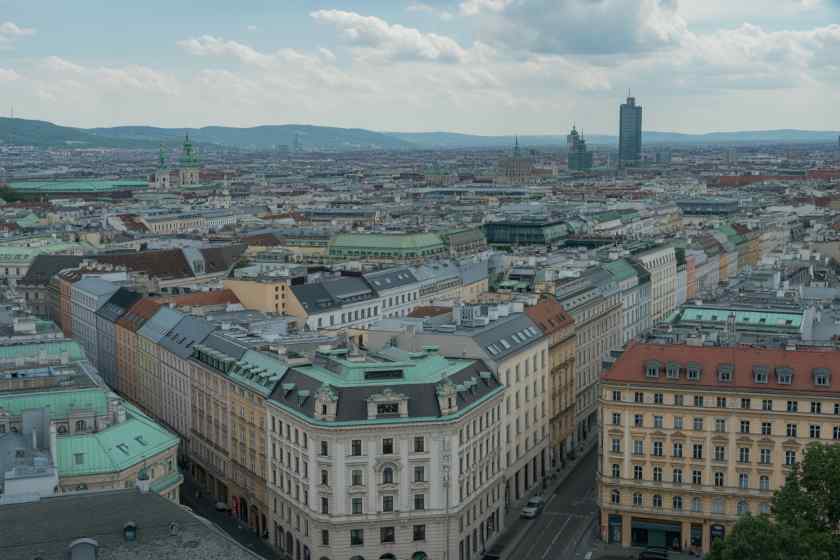Published on
October 27, 2025
The European Union recorded over 3 billion overnight stays, signalling a drastic improvement in the continent’s tourism sector. Union data captures how European destinations have fully rebounded from the adverse effects of the COVID-19 pandemic, confirming their increasing attractiveness. Investment in tourism product development and marketing, ranging from the sunny Mediterranean beaches to the historical wonders of the Baltic states, has certainly paid off and continues to aid in the economic recovery of the entire EU.
Romania, Portugal, Latvia, and Poland record a great leap in booked stays, approximately 14% from the previous year. Strategic investments have improved the regional tourism infrastructure and service offerings. Poland, Latvia, and Malta, particularly, have mastered their method and proven able to capture the attention of sun, culture, and adventure tourist markets.
The beautiful Mediterranean is a popular tourist destination owing to its picturesque azure beaches and mild climate, and its historic cities. Cyprus and Malta have shifted their focus to attract tourists, capitalizing on their sunny beaches and historical sites. Urban and cultural tourism, along with enhancements in infrastructure have contributed to the growing popularity of Latvia and Poland.
Poland and Latvia have also joined the list of countries, along with Italy, Greece, and Spain, which have registered uninterrupted growth and over 4% growth in overnight stays. Iconic landmarks and their recent popularity ensure the summer months yield peak benefits. Some of the landmarks include the Colosseum located in Rome, the Acropolis located in Athens, and the architecture in Barcelona. These countries have ancient ruins, town beaches with resorts, and lively cultural locals, which are the main reasons travellers go to them in summer.
Issues for Some European Locations
Unlike the rest of Europe, which enjoyed growth, it remained stagnant. Finland, for instance, recorded a small decline of 0.7% in overnight stays, which was offset by the euro’s strength, making Finland a more expensive destination for budget travellers and offsetting the weather’s impact.
France is still one of the most visited countries in the world, having registered a slight decline in tourism of about 0.6% l. As with most countries, the decline can be attributed to the domestic strikes and other geopolitical events of the year that disrupted travel. However, millions continue to visit countries like France, and famous cities like Paris, as well as the French Riviera, are sure to maintain France’s tourism targets.
In contrast, steady growth was experienced in countries like Belgium and Sweden, having recorded a 0.3% increase in overnight stays. Though the statistics are far from the double-digit increases enjoyed by other nations, the data, along with the tempered global travel system, point to a stable and demanding tourism market.
Surpassing Pre-COVID Levels: Strong Tourism Growth in Europe
There is a particularly important relationship between the 2024 tourism figures and the 2019 statistics – the overall increase in numbers surpasses the growth experienced in Europe’s tourism sector over the preceding 5 years. This is a sure sign that Europe is no longer recovering from the pandemic. Local businesses like transportation, as well as restaurants and hotels, can greatly benefit from this by investing in the growing tourism market.
Of note is the recovery of rural tourism, which is epitomised by the recovery the slip rural regions in which rural sightseeing had been negatively impacted by the pandemic of tourists bounding for rural destinations as they were attracted to the allure of nature, undisturbed landscapes, cultural villages, and local cultural immersions. From the standpoint of the fledgling tourism industry in the languid rural tiers of economies recently emerging tothe limelight because of the shadow effect of the metropolitan regions for tourism, the primary and undeveloped attractions constitute as sustainable, less crowding, and genuine tourist destinations.
The primary destinations for spending in the urban hubs and remote regions saw a prosperity in the monetary circulation in the economy because of the expenditures made for sightseeing, accommodation, local delicacies, and the cultural showcases and activities. One of the primary industries in the European Union and its southern and eastern prefixes is tourism and its concomitant services, especially the contribution of the tourism industry towards the regional development and its share to the gross domestic product always generate above optimum returns.
The European Union is an advocate for sustainable tourism and investments for the growing tensions as no alteration to the natural tourism heritage assures that the growth of the industry is for the environment and economic benefits. These sustainable tourism activities practised by the Union members, like Spain, Italy and Greece, foster economic growth alongside the eroded regions.
The Future of European Tourism
The continued growth of the EU’s tourism sector is likely to be fueled by enhanced air connections, new developments in digital promotional strategies, and the ever-increasing thirst for genuine experiences. With more tourists wanting to engage in more meaningful travel, destinations providing greater emphasis on authentic, sustainable, and culturally immersive experiences will be favoured.
The ongoing recovery of tourism to Europe, in addition to growth in travel beyond the summer, paints a bright future for the sector. Europe is still a preferred travel destination and offers diverse experiences such as cultural heritage, natural scenery, and historical sites of value. With the increase in global travel demand, more and more tourists will continue to choose Europe.

